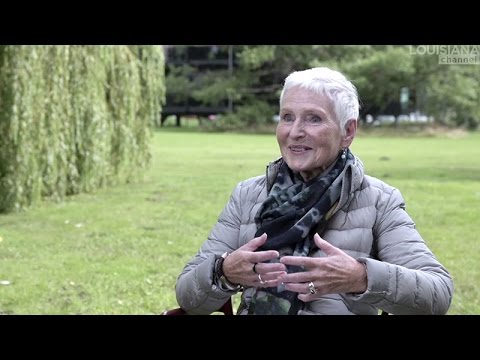
“Writing isn’t therapy – it’s a matter of life or death. It’s more important than therapy – it’s why I’m here.” Norwegian novelist Herbjørg Wassmo – author of ‘Dina’s Book’ – here shares the moving story of how writing helped her survive a painful childhood.
Wassmo was abused as a child, and for a long time she had difficulties talking about it. Being able to write about the experience in her notebooks helped her deal with it: “To put it into words, helped me in a process to win myself back somehow.” She does not, however, view writing about her life as therapy but as a matter of survival. Writing and reading gave Wassmo the courage to understand that it was possible to “become someone” and to regain her own self-respect. She was a broken child and relieved to find a niche where there was finally room for “untainted thoughts.”
Despite the autobiographical elements in her novels, Wassmo feels that it is important for the author to step aside and let the novel and its characters take the stage. She does not seek to expose others, but rather to expose herself, and her wish is for her books to be read freely and without the presence of the author
Herbjørg Margretha Wassmo (b. 1942) is a Norwegian author. She worked as a teacher in northern Norway until she published her first work in 1976 – a collection of poems called ‘Beating of Wings’ (‘Vingeslag’). Wassmo’s major breakthrough was her first novel ‘The House with the Blind Glass Porch’ (‘Huset med den blinde glasveranda’) in 1981, which won her the prize Kritikerprisen. Other novels include ‘Hudløs himmel’ (1986), ‘Dina’s Book’ (‘Dinas bok’) (1989) – which was later made into a major film titled ‘I Am Dina’ in 2002 – ‘Det sjuende møte’ (2000), ‘Et glas melk takk’ (2006) and ‘Disse øyeblikke’ (2013). Wassmo is also the recipient of The Nordic Council’s Literature Prize (1987) for ‘Hudløs himmel’ and the Prix Jean Monnét in 1998.
Herbjørg Wassmo was interviewed by Anette Dina Sørensen at the Louisiana Museum of Modern Art, Denmark in August 2014.
Camera: Klaus Elmer
Edited by: Sonja Strange
Produced by: Kasper Bech Dyg
Copyright: Louisiana Channel, Louisiana Museum of Modern Art, 2015
Supported by Nordea-fonden
source